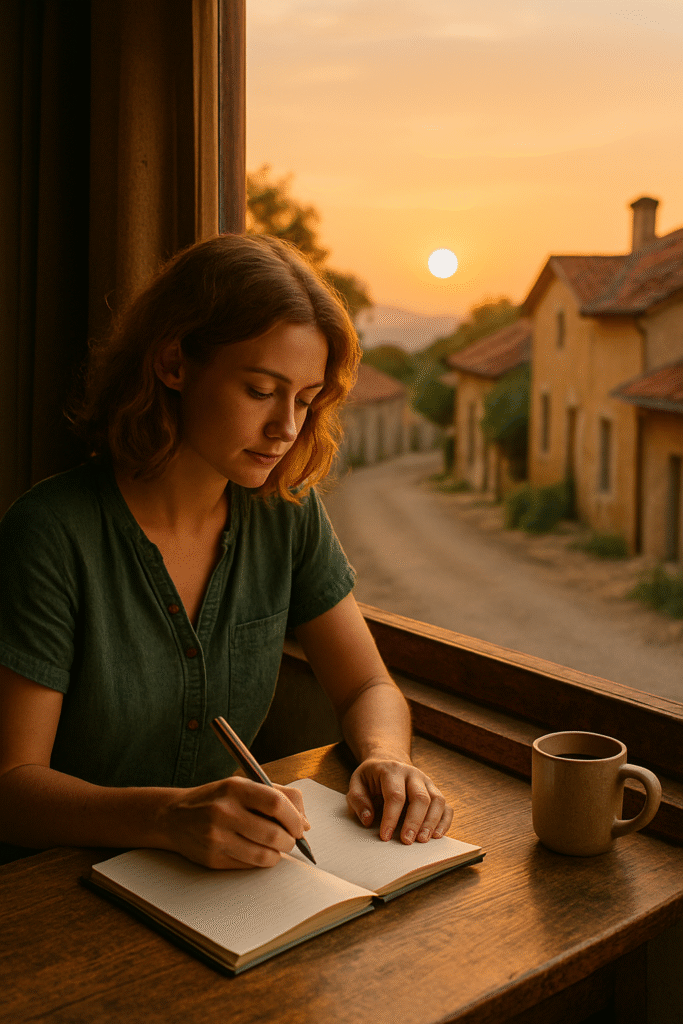
In an era where we binge-watch, fast-scroll, and rush through life with packed Google Calendars, a new kind of travel is gaining momentum—not with speed, but with intention.
Enter: slow travel.
It’s not about how far you go or how many countries you check off your list. It’s about how deeply you experience the places you visit. And in a world obsessed with efficiency and bucket lists, slow travel offers a radical reminder: sometimes, less really is more.
What Is Slow Travel, Exactly?
Slow travel is the art of traveling more mindfully and meaningfully. Rather than rushing from landmark to landmark, slow travelers choose to linger. They might spend a week (or a month) in one place. They walk more than they Uber. They skip the highlights reel in favor of local markets, unfiltered moments, and wandering without Google Maps dictating the route.
It’s travel that values depth over distance, and presence over pace.
Where Did This Idea Come From?
The concept of slow travel grew out of the broader “slow living” movement—which pushes back against the breakneck speed of modern life. Think slow food, slow fashion, and now, slow travel. It’s about savoring experiences, not racing through them.
And post-2020, as the world reevaluated priorities and the way we work and live shifted, slow travel found new relevance. People wanted more from their trips than just “the ‘gram.” They wanted meaning.
Why We’re Craving It
Let’s be honest: traditional travel can feel… exhausting. Jet lag, rushed tours, overstuffed itineraries. You come home needing a vacation from your vacation.
Slow travel flips that script.
It’s about:
- Spending time in one place long enough to learn the rhythms of a city.
- Eating at the same café more than once and becoming a “regular.”
- Taking the scenic route, even if it means getting a little lost.
- Being curious, not just busy.
It’s also more sustainable—for the traveler, the environment, and the communities being visited.
Benefits of Traveling Slowly
- More authentic experiences. You engage with locals and culture beyond surface-level tourism.
- Lower stress. Fewer time constraints means more flexibility, less rushing, and actual rest.
- Deeper connection. You begin to feel a place rather than just see it.
- Smaller footprint. Staying longer in fewer places reduces carbon emissions and supports local economies more consistently.
What Slow Travel Looks Like in Practice
- Spending a month in a Tuscan village instead of cramming five cities into one week.
- Taking the train instead of flying.
- Cooking local ingredients in your rental’s tiny kitchen.
- Volunteering, learning the language, or simply being in a place without an agenda.
You don’t need unlimited time or money to travel slowly—you just need the willingness to trade “more” for “meaningful.”
Final Thought: The Joy of Staying Still
Slow travel isn’t about doing nothing—it’s about doing enough, and doing it well. It’s the morning you spend sipping coffee on a balcony instead of queuing for a bus. It’s that one perfect conversation with a local shop owner. It’s walking a quiet street with nowhere particular to go—and loving it.
In a world obsessed with speed, slow travel is a quiet rebellion. One that invites us to breathe, connect, and rediscover the beauty of not hurrying through the world.
Author: AI Generated